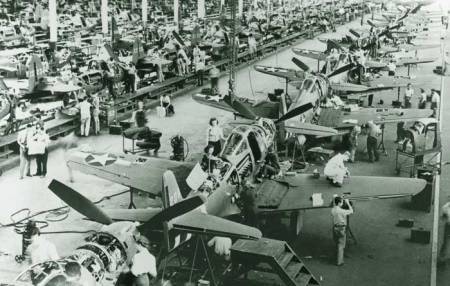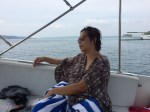My wife and I had a recent Anniversary respite at the plush Pearl Farm Resort in Samal Island fronting Davao City. The Pearl Farm Resort is by far the most popular among Davao’s growing number of classy resort hotels.
The resort got its name from an abandoned pearl farm which used to operate in the very area where the resort is located now. The farm used to provide livelihood and plenty of activity in that remote area of Samal Island. There is however an interesting tale that lingers, nurtured in whispers by the old folks who grew with the mysterious pearl farm. This is the story behind the pearl farm.
Japan invaded the Philippines right after the treacherous attack on Pearl Harbor on December 7, 1941. This was immediately followed by successful forays in what is now Hongkong, Indonesia, Singapore, Malaysia, Cambodia, Myanmar to as far west as the outskirts of India, and as far south as New Guinea and the Solomons. Those were heady days for the Japanese leadership then, as their military might steamrollered past ill-prepared military resistance in the Pacific theatre.

By the end of 1942 however, the mood at the Japanese high military headquarters had changed. Japanese military strategists already knew that there was no way they could win the war. With no way of matching – and no way of destroying – American military production in mainland USA, Japan’s initial successes in the Far East were bound to be reversed. Unlike Japan’s production base which was now susceptible to constant bombing raids, America’s production lines were tucked in remote areas in the vast plains of mainland USA. And these factories churning out warplanes and ships and armaments continued to grow by the day.

That said, Japan prepared for the worst. Among others, special units moved to transport the confiscated treasures from the conquered states to Japan. The mission: to stash away as much of the confiscated treasures as they could in preparation for a worst-case post-war scenario.

The traditional route for homebound cargo ships from the Far East was through Davao, then called Little Tokyo. Cargo ships filled with untold riches from the Malayas would take a short breather in Davao before running the gauntlet across the sea from the Philippines to Japan. This would continue until Allied forces sealed off the sea routes permanently with MacArthur’s island-hopping strategy.

One of these treasure-laden ships was on its way back to Japan during the latter days of the war when it was chanced upon by American planes. This ship was sunk right beside Samal Island, where it had tried to hide from the planes.

Years after the war, a pearl farm was established in Samal, right beside the area where the ship had sunk. The pearl farm was purportedly owned by a descendant of Emilio Aguinaldo, the first President of the Republic.
Aguinaldo had no love lost for the Americans, having lost to the Americans during the Fil-American War in the early 1900s. Aguinaldo then had collaborated with the Japanese forces during the war. Arrested after the war, he was later granted amnesty. Aguinaldo’s sudden interest in establishing a pearl farm in far-away Davao is highly suspect. Aguinaldo was a Caviteno, so far removed from the shores of Samal. Besides, why would he choose to establish his pearl farm in Davao? Why not somewhere near Cavite, where he could easily monitor its progress?

Many old hands in Samal are convinced that the pearl farm then was a mere cover story for a Japanese recovery operation on the treasures aboard the sunken ship. Years later, the pearl farm operations were abandoned. For years, local kids would scour the abandoned post for pink and white pearls which they would play with like marbles, not realizing the value of each. Locals believe that the pearl farm operations ceased when the treasures had all been safely recovered and spirited away.

A decade after the deactivation of the pearl farm, the property would be bought and transformed into a top-of-the-line resort hotel. With its natural tropical beauty, its marine sanctuary, plus its promotion of ethnic Mindanao culture and arts, the resort would become a perfect paradise for those who seek to escape the rat race in the cities.

Thus was born the Pearl Farm Resort. Come and experience the beauty and the serenity of the Pearl Farm. Who knows, you may yet find some treasures left behind by the ghosts of the sunken treasure ship!
(photos courtesy of althistory.com, youtube.com, wikipedia, usmm.org, theunredacted.com, malapascuade.com, treasureexpeditions.com, and cbholganza)




















Fascinating post Charly. Its interesting how a modern day resort can be born out of a war time legend. Great read. Thanks for posting!
LikeLiked by 1 person
Thanks, my friend! I have been remiss in my posting due to a heavy workload. Messages such as yours really help perk me up. Keep ’em coming, Rich!
LikeLike
What a beautiful place after the horrors of the Japanese occupation.
LikeLiked by 1 person
Yes, John. After the horrors of that last great war, the beauty and serenity you find here speaks eloquently of what peace can bring us.
LikeLike
Reblogged this on penpowersong.
LikeLiked by 1 person
Thanks for the reblog, my friend!
LikeLike
Enjoyed the history lesson.
LikeLike
Glad you enjoyed it, Carl. You inspire me to write on. Cheers!
LikeLike
Great read. History adds spice to what seems ordinary.
LikeLiked by 1 person
Yes, Levin. Truly interesting to know the side stories that go with the highlights of history, the hidden stories that connect to what the world is today. Thank you for the read and the kind words.
LikeLike
Reblogged this on Color My World and commented:
By popular demand, here’s something for the World War II history buffs out there. A fascinating tale of hidden treasures, subterfuge and more.
LikeLike